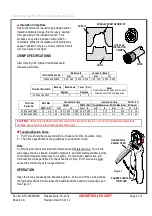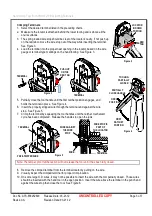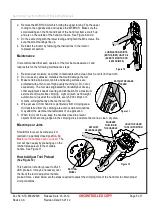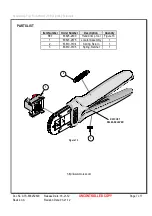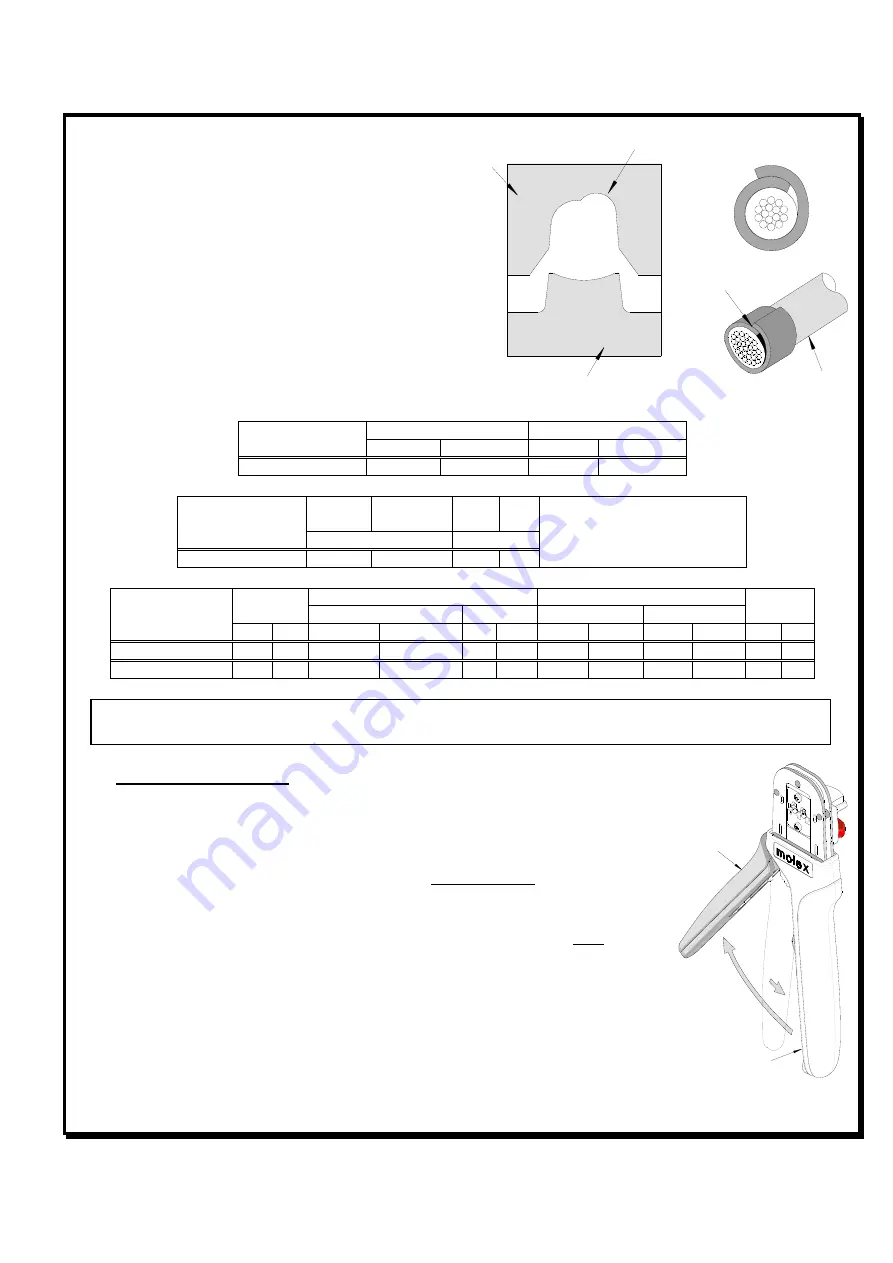
Hand Crimp Tool For 3.18mm (.125”) Lighting Terminals
Doc No: ATS-638252600
Release Date: 03-21-12
UNCONTROLLED COPY
Page 2 of 7
Revision: A
Revision Date: 03-21-12
▲
Insulation Crimp Note
:
Due to the terminal’s insulation grip design and/or
insulation diameter range, this tool uses “overlap”
form geometry in the insulation punch. This
produces an overlap insulation crimp (A620 –
compliant). While the insulation punch profile may
appear “lopsided”, this is a normal condition for this
tool. See figure to the right.
CRIMP SPECIFICATIONS
After crimping, the crimped terminals should
measure as follows:
Terminal Series No.
Bell mouth
Conductor Brush
mm
In.
mm
In.
42824 and 42825
0.20 - 0.60 0.008 - 0.024 1.00 -1.50 0.039 - 0.059
Terminal Series No.
Bend up Bend down Twist Roll
Seam
Seam shall not be open and no wire
Allowed out of the crimping area
Degrees
Degrees
42824 and 42825
3
3
4
8
Terminal
Series No.
Wire Size
Conductor Crimp
Insulation Crimp
Pull Force
Minimum
Height
Width (Ref) Height Maximum Width Maximum
AWG mm
2
mm
In.
mm
In.
mm
In.
mm
In.
N
Lb.
42824 and 42825
18
0.8 1.52 – 1.60 0.060 – 0.063 2.30 0.090
3.9
0.15
4.0
0.16
116
26
42824 and 42825
16
1.3 1.58 – 1.66 0.062 – 0.065 2.30 0.090
4.2
0.17
4.2
0.17
178
40
CAUTION:
Crimp only the Molex terminals listed in the scope for this tool. Do not crimp hardened objects as
damage can occur to the tool frame and/or crimp dies.
Tool Qualification Notes:
1.
Pull Force should be measured with no influence from the insulation crimp.
2.
The above specifications are guidelines to an optimum crimp.
Note:
A crimp height chart is provided with this manual as Reference Only. Due to the
wide range of wires, strands, insulation diameters, and durometer available, actual
crimp height measurements may very slightly. An occasional, destructive, pull
force test should be performed to check hand tool crimp. Pull Force value must
exceed the minimum pull force specification.
OPERATION
Open the tool by squeezing the handles together. At the end of the closing stroke,
the ratchet mechanism will release the handles and the hand tool will spring open.
See Figure 1.
OVERLAP
INSULATION
CRIMP
OVERLAP FORM GEOMETRY
ANVIL
PUNCH
WIRE
SQUEEZE HANDLES
TOGETHER
HANDLE WILL
SPRING OPEN
Figure 1


